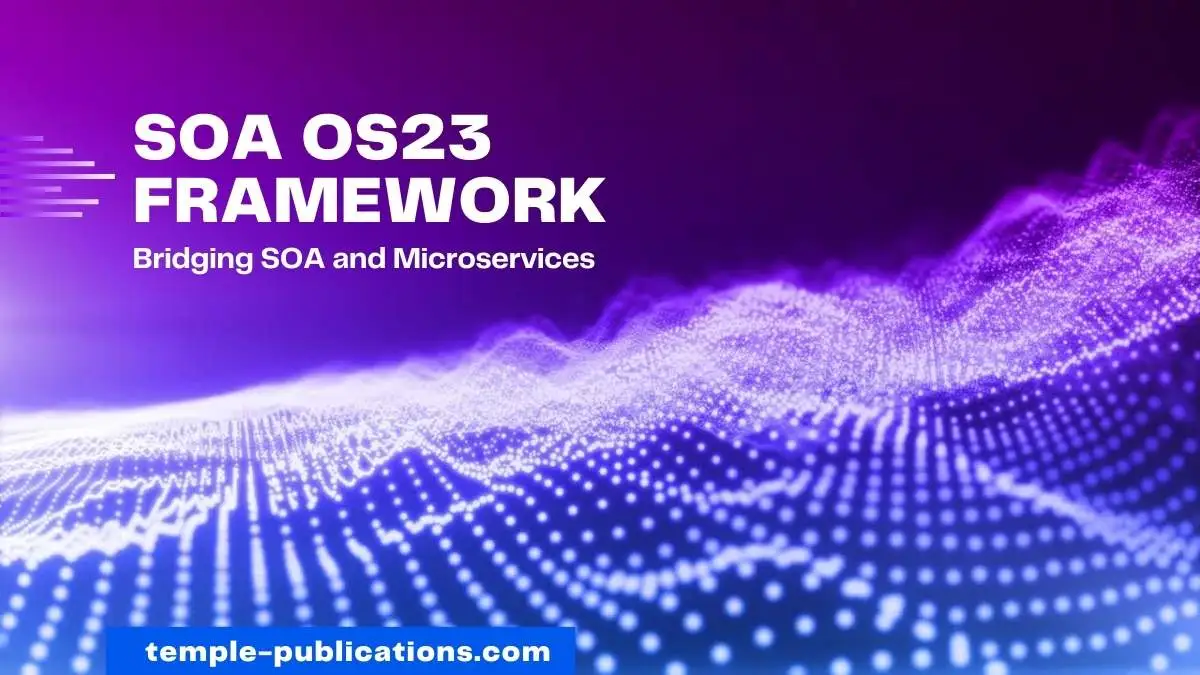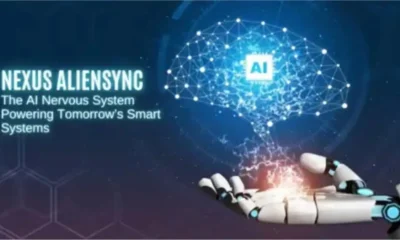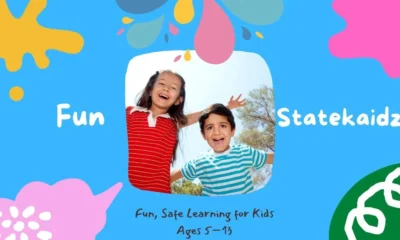TECHNOLOGY
SOA OS23: Revolutionizing Service-Oriented Architecture

SOA OS23 is a conceptual, technology-agnostic framework for building modern, service-oriented systems.
It stands for “Service-Oriented Architecture – Open Standard 2023.” Designed to meet the needs of today’s API-first, cloud-native world. It combines proven SOA principles with modern microservices practices.
It is not a product or protocol, but a unified blueprint designed to help enterprises build scalable, interoperable architectures for today’s demands.
Modern digital systems are becoming increasingly complex, distributed, and integration-heavy. Legacy SOA falls short, and microservices often lack governance. SOA OS23 fills this gap by combining structure and agility, bridging SOA with microservices while embedding cloud, security, and observability by design.
What Is SOA OS23 and Why Does It Matter?
Modern service-oriented systems are created through SOA OS23, which brings together the best of traditional SOA service sharing and microservices flexibility and scalability. It insists on using RESTful APIs, starting with contracts, managing versions, ensuring governance, and focusing on observability.
Unlike its predecessor, SOA OS23 uses interoperable lightweight tools and fits well with cloud-native, DevOps, and zero-trust security. Regulated industries are able to depend on it because it is scalable, traceable, and easy to maintain.
Key Pillars of SOA OS23
Reusable and Interoperable Services:
Services are modular, self-describing, and capable of being reused across teams or departments.
Contract-First API Design:
APIs are defined using specifications like OpenAPI or AsyncAPI before implementation, preventing interface drift.
Centralized Governance:
API gateways and service registries enforce policy, control access, and track lifecycle states across all services.
Comprehensive Observability:
The framework mandates logs, metrics, traces, and alerts integrated across the stack using tools like OpenTelemetry.
The Evolution of SOA: Why OS23 Is Necessary Now
SOA came into existence in the early 2000s because it saw that large systems could not fulfill all requirements. ESB technology, along with the strict SOAP structures, did not allow for the loosely coupled standards service reuse intended. As cloud infrastructure, containers, and microservices grew, organizations wanted a version of SOA that was lightweight, quick, and easier to change.
It is at this identifying mark that SOA OS23 comes into focus, enabling modern usage with Docker containers, Kubernetes for management, and Istio for service meshes. In contrast, legacy SOA mainly used IT controls, but OS23 empowers developers to govern themselves with automated tools.
Architecture and Components of SOA OS23
At the core of the SOA OS23 model are loosely coupled services exposed through standardized APIs. These services are:
- Stateless and independently deployable
- Registered in a service registry for discovery
- Secured using OAuth2.0, mTLS, and identity federation
- Routed and controlled through an API Gateway with rate limiting, logging, and observability baked in
Also crucial to the architecture are metadata layers—JSON or YAML definitions that serve as machine-readable contracts for every service. These contracts allow developers to auto-generate client SDKs and stubs, significantly reducing integration time.
SOA OS23 vs Traditional SOA
| Feature | Traditional SOA | SOA OS23 |
| Protocol | SOAP/WSDL | REST, gRPC, GraphQL |
| Tooling | ESB, UDDI | API Gateway, Service Mesh |
| Contract Management | WSDL, manual enforcement | OpenAPI/AsyncAPI with CI validation |
| Observability | Minimal | Full-stack (logs, metrics, traces) |
| Versioning Strategy | Often neglected | Mandatory semantic versioning |
| DevOps Compatibility | Low | High (CI/CD, container-native) |
| Security Model | Perimeter-based | Zero Trust (identity-aware) |
SOA OS23 and Microservices: A Unified Approach
At the beginning, SOA OS23 might look the same as microservices. On the other hand, when it comes to microservices, separate services are much more independent and scalable, yet SOA OS23 offers main management, full audit capability, and simpler contracts that meet the needs of regulated businesses.
On the other hand, while microservices can be deployed alone and supervised little, services in SOA OS23 need to be registered, assigned a version, and agree to contracts. This doesn’t limit the process—it ensures updates are managed safely so no one’s integration is affected.
API-First and Contract-First: A Must-Have in OS23
Contract-first development is central to how OS23 is implemented. Users of this approach need to formally list the model’s interfaces ahead of coding any code. Not only does it avoid new integration problems, but it also makes possible:
- Code generation for multiple languages
- Clear separation of responsibilities
- Automated tests and validations
- Seamless upgrades via versioning policies
By embracing API-first culture, organizations build trust between teams and create robust APIs that can evolve without breaking downstream consumers.
Versioning and Governance Strategies
- Semantic Versioning (SemVer) is non-negotiable in SOA OS23. Each API must declare its version and follow a deprecation strategy.
- Lifecycle Tags like beta, stable, and deprecated help manage expectations across service consumers.
- Governance Dashboards visualize service status, dependencies, usage metrics, and contract compliance.
- CI/CD Pipelines enforce validation, rollback mechanisms, and automated contract testing during deployment.
Observability and Auditing in SOA OS23
Observability is factored into the design from the beginning in SOA OS23. Software offerings should produce logs, metrics and traces that are designed to be used with central tools such as Prometheus, Grafana, Jaeger or Elastic Stack. This supports:
- Real-time debugging and root cause analysis
- SLA tracking and availability metrics
- Compliance reporting for audits
- Enhanced security via anomaly detection
Security: Zero Trust in Action
Modern digital ecosystems demand security that extends beyond firewalls. SOA OS23 implements zero-trust principles, including:
- Service-to-service authentication using mTLS
- OAuth2.0 and JWT-based access tokens for client APIs
- Role-based and policy-based access control via externalized policy engines (e.g., OPA – Open Policy Agent)
- Encrypted logs and secured metadata to protect contract-level information
Who Should Use SOA OS23?
Regulated Industries:
Financial services, healthcare, and government agencies needing traceability and compliance.
Global Enterprises:
Companies managing multiple dev teams or services across regions.
Modernizing Legacy Systems:
Organizations transitioning from monoliths or ESB-driven architectures.
API-Centric Startups:
Businesses that rely on public or partner APIs as part of their core model.
Challenges and Considerations
Even so, there are some difficulties with SOA OS23. Carrying out governance and contracts leads to new levels of operational complexity. Teams should invest in tools and learning about versioning and monitoring. In addition, companies using single, complex systems often find it tough to move away from them.
In most cases, the advantages of long-term stability, larger operations, and quicker response are more important than the obstacles.
Future
SOA OS23 may move forward to become a formal industry standard supported by useful development software. AI, self-healing functions, and policy-as-code platforms may be used more tightly with cloud technologies. Since many enterprises are moving to hybrid cloud and edge computing, there will be greater demand for models such as SOA OS23.
Conclusion
When your organization needs to manage SOA with the pace of microservices, turn to SOA OS23. Using this approach allows for systems that grow well, offer good security, and can be easily observed, supporting togetherness among developers and architects. If you need to modernize aging systems or start with something new, this framework ensures your API development is ready for the future.
Pick one service, strictly follow contract-first rules, add governance tools, and build step by step. SOA OS23 does more than offer guidelines—it leads to a cultural change toward making software architecture more intentional and sustainable.
-

 BIOGRAPHY7 months ago
BIOGRAPHY7 months agoBehind the Scenes with Sandra Orlow: An Exclusive Interview
-

 HOME1 year ago
HOME1 year agoDiscovering Insights: A Deep Dive into the //vital-mag.net blog
-

 HOME1 year ago
HOME1 year agoSifangds in Action: Real-Life Applications and Success Stories
-

 BIOGRAPHY1 year ago
BIOGRAPHY1 year agoThe Woman Behind the Comedian: Meet Andrew Santino Wife




























